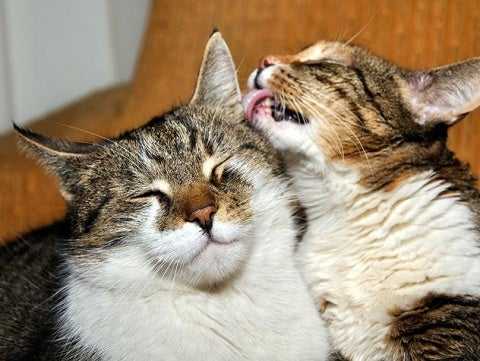Why Adopt a Second Cat?
There are benefits to having two cats, but they apply only when the two cats are well matched and have enough physical space to live together comfortably. One benefit is that the two cats provide each other with exercise, social interaction, and other forms of mental stimulation. Cats housed together have more opportunity to “be cats” by socializing and playing with each other, and this means they are less likely to be destructive or engage in other problematic behavior. For example, some single cats annoy their owners by trying to wake them during the night for play. Two cats might still wake the owner by tearing around the home, but at least the owner isn’t getting up out of bed to entertain the cat. Another benefit of two cats is that they are sometimes cleaner than a cat living by itself. Cats will groom each other’s ears and coat, often getting at places the cat can’t reach on its own!

The positive impact of having multiple cats can be negated by “cohabitation anxiety” if the cats do not get along. Adult cats with a history of living alone are better off remaining solitary unless you can provide so much space that the cats essentially live alone in the same home. It’s also important to be aware that cats can take a LONG time to learn to like each other. Dogs usually decide to be friends, or not, within a few hours or days. Cats, on the other hand, can take as long as a year to stop squabbling and start hanging out together.
Individual cats differ in activity level and sociability, primarily because of age differences and previous experience and exposure to other cats. These differences must be considered when making a match. Kittens, adolescents, and young adults can satisfy each other’s need to play by engaging in stalk-chase and wrestling games. Other suitable matches include pairing a kitten with an experienced adult female, so the female can take on a “motherly” role, or pairing a “bratty” adolescent with an older, more experienced cat. In some cases, a calm mature adult with a history of maternal or social behavior can tolerate the inappropriate behavior of a younger cat with limited social skills, and in the process “teach” more socially acceptable behavior.
Space is an absolute necessity for multiple cat homes. Cats housed in groups are less likely to exhibit aggressive or anxious behavior when each cat has at least 1 m2 of floor space and 2 m of vertical space, such as window sills and shelving. Providing access to an outdoor enclosure also significantly increases living space, except during the colder months when cats have little desire to be outside. Indoor cats do best with multiple sites for resting and hiding, so each cat can control how much it interacts with others. Cats need to have spots for hiding so they can be alone and undisturbed. Multiple litterboxes are also advisable so the cats can feel safe while eliminating. The number of litter boxes should equal the number of cats you have, plus one. So, for example, if you have three cats, you need four boxes. And, of course, provide plenty of scratching posts and toys to keep everyone happy. Food and water can be placed in a common area, as cats seem to enjoy congregating to eat. However, if you have a particularly timid cat, you may need to provide extra rations in a secluded area.
Realize that multiple cats are not likely to be best buddies immediately. There are no guarantees and it’s always best to be super-cautious when introducing cats to each other. If you are adopting a cat that has already lived in a group at the shelter, consider adopting one of his/her friends. Introducing two friends to a new home can ease the transition, and you’ll be much more likely to have a successful merger.